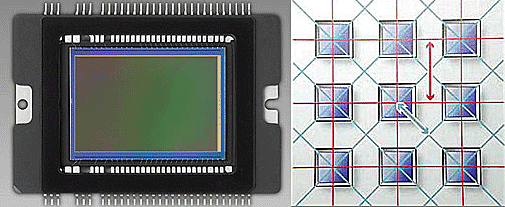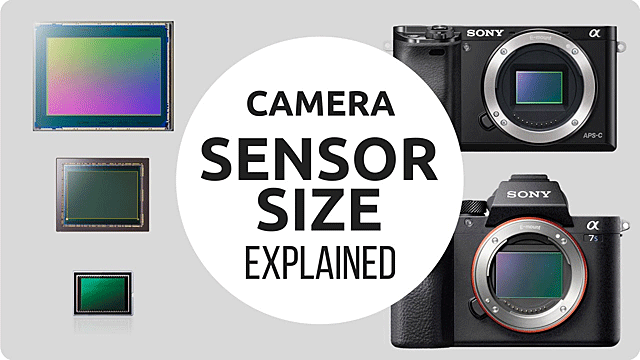

 




|

THE
DIFFERENT TYPES OF DIGITAL IMAGE SENSORS
 Two
main types of sensors are used in digital cameras today—CCD (charge-coupled
device) and CMOS (complementary metal-oxide semiconductor) imagers. Although
each type of sensor uses different technology to capture images, these
sensors have no apparent quality difference. Two
main types of sensors are used in digital cameras today—CCD (charge-coupled
device) and CMOS (complementary metal-oxide semiconductor) imagers. Although
each type of sensor uses different technology to capture images, these
sensors have no apparent quality difference.
Both CCD and CMOS imagers use metal-oxide semiconductors, and they have
about the same degree of sensitivity to light.
The main difference is in what each type sensor does with the light after
capturing it:
The CCD sensor captures photons as electrical charges in each photosite—a
light-sensitive area that represents a pixel. After exposure, the charges
are swept off the chip to an amplifier located in one corner of the sensor.
External circuitry converts the analog signal to digital form and handles
storing it on your memory card.
The CMOS sensor includes solid-state circuitry at each and every photosite
and can manipulate the data for each pixel right in the sensor. The CMOS
sensor can respond to lighting conditions in ways that a CCD can’t. Every
photosite can be accessed individually.

It used to be that the general rule concerning sensors was that the more
megapixels a camera had, the better quality of photos from that camera. This
is absolutely untrue.
Since the early digital cameras all had the same size sensors and the same
size photosites, the quality depended on the number of megapixels the camera
had. But as digital technology improved, camera manufacturers developed
three different sizes of sensors—small, medium, and large.

The larger an image sensor, the larger the pixels on that sensor. So the
overall quality of images with a camera with 16 megapixels won’t be as good
as one, also with 16 megapixels, using the largest sensor. That’s because
the pixels on the larger sensor are larger. So if a smaller sensor has fewer
megapixels, it’s pixels will also be slightly larger. For this reason, many
manufacturers reduced the number of megapixels on their smaller sensors but
made them slightly larger.
Bigger photosites soak in more light and generate less heat, which means
less digital “noise.” Other things being equal, you always want bigger
pixels on your sensor.
|


